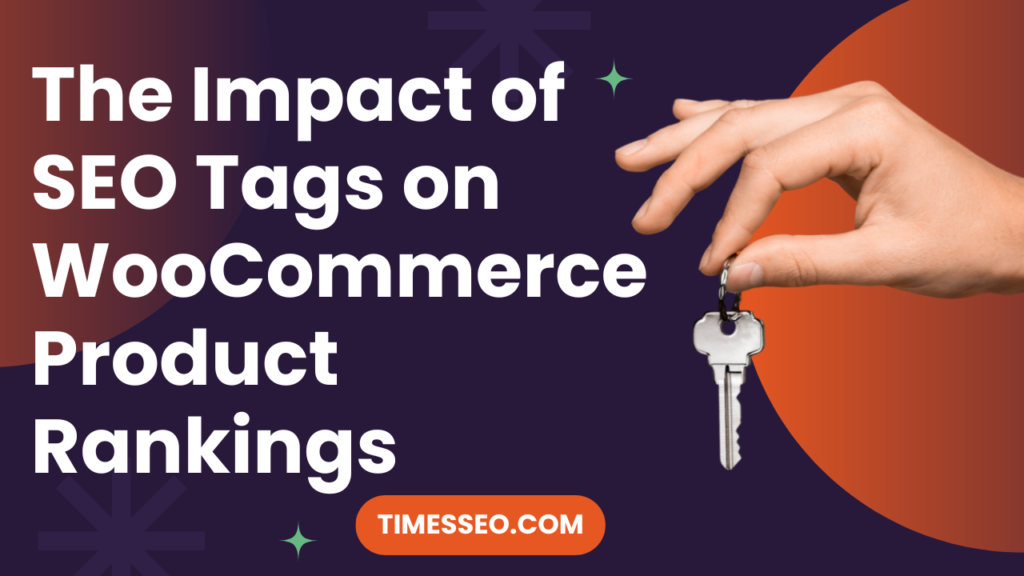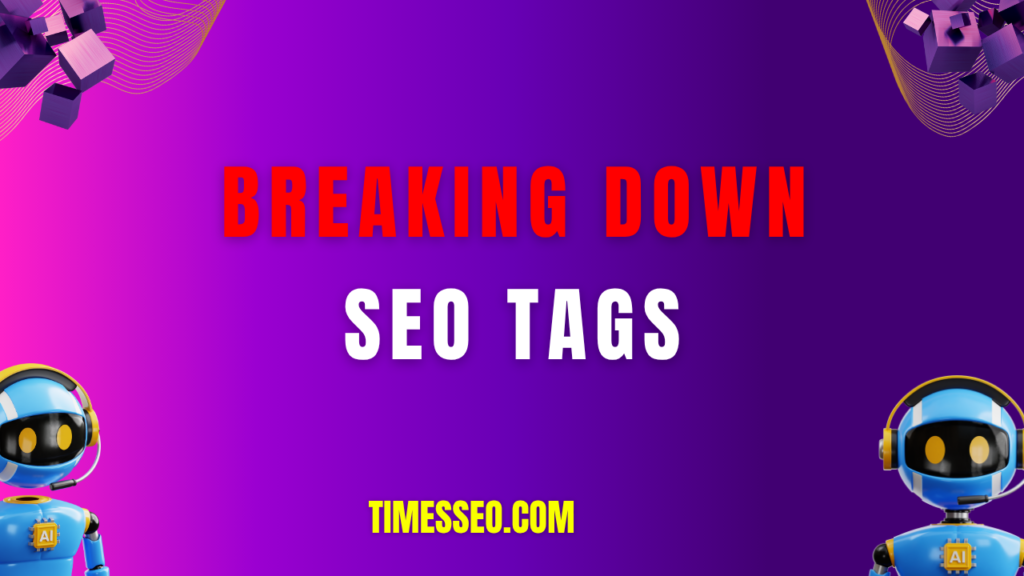
The Impact of SEO Tags on WooCommerce Product Rankings
Discover how SEO tags for WooCommerce products directly influence your store’s search engine rankings. This detailed guide explores the role of title tags, meta descriptions, image alt text, and more—helping you optimize every product page for higher visibility and better conversions.
Table of Contents
Introduction
Are your WooCommerce products lost somewhere on the 5th page of Google?
Let’s face it—if your product listings aren’t ranking, they’re not selling. One of the most overlooked game-changers in improving your visibility is using SEO tags effectively. From title tags to image alt texts, these tiny pieces of HTML carry massive weight.
In this article, we’ll explore the impact of SEO tags on WooCommerce product rankings and how you can use them to rise to the top of search results. Ready to turn browsers into buyers? Let’s dive in.
Breaking Down SEO Tags
Understanding the SEO Tag
Title Tags
On Google, consumers see this clickable headline. It needs to be sharp, keyword-rich, and compelling.
Meta Descriptions
A well-written meta description increases CTR, which has an impact on rankings even if it is not a direct ranking criteria.
Image Alt Text
Google can’t “see” images like humans. Alt text describes the image for search engines and visually impaired users.
Header Tags (H1–H6)
These provide your content structure and make it easier for Google to comprehend the purpose of each section. The subheadings are organized using H2 to H6 tags, and the main title is formatted as H1.
Product Tags and Categories
These clarify product relationships and improve Google’s comprehension of the architecture of your website.
How Search Engines Read SEO Tags
The Role of Crawlers
Search engines use bots called crawlers to scan your site. SEO tags guide these crawlers on what each page and product is about.
Indexing and Relevance
Once crawled, your pages are indexed. Good SEO tags improve relevance and indexing accuracy, meaning higher potential rankings.
Title Tags – The First Ranking Trigger
Best Practices for WooCommerce Product Titles
- Use your focus keyword early.
- Include brand, model, and a primary feature.
- To prevent being truncated in SERPs, keep it around 60 characters.
Example:
“Samsung Galaxy S23 Ultra – 256GB Black | Unlocked”
Common Mistakes to Avoid
- Using the same title for multiple products.
- Not including a keyword.
- Stuffing titles with keywords unnaturally.
Meta Descriptions – Driving Click-Throughs
How Meta Descriptions Affect SERP
They may not be a ranking factor, but they influence whether users click on your result or not. Higher CTR = better ranking signals.
Writing Meta Descriptions that Convert
- Stay within 150–160 characters.
- Include benefits and a call to action.
- Use your primary keyword naturally.
Example:
“Buy the latest Samsung Galaxy S23 Ultra – lightning-fast performance, stunning display. Order now with free shipping!”
Image Alt Tags – The Hidden Gem of SEO
How Alt Text Helps in Image SEO
Alt text helps your products appear in Google Image search, which can be a massive traffic source.
Accessibility and Ranking Benefits
Alt text also improves accessibility, giving Google another reason to favor your page in rankings.
Example:
Alt Text: “Samsung Galaxy S23 Ultra black front and back view”
Header Tags – Structuring Content for SEO and UX
Use of H1 for Product Names
Every product page should have a single H1 tag, usually the product name.
Using H2-H4 to Enhance Readability and SEO
Use H2–H4 tags to divide reviews, specs, and frequently asked questions into parts that are easy to read. Both users and SEO benefit from it.
Categories and Tags – Contextual Boosters
SEO Benefits of Proper Categorization
Logical categories tell Google how your products relate to each other. It helps with internal linking and relevance.
Avoiding Duplicate Content and Tag Overuse
Don’t spam irrelevant tags. Stick to 5–10 smart ones. Avoid creating multiple tags with similar names (e.g., “Black T-Shirt” and “T-Shirt Black”).
Real-World Case Study: Tag Optimization and Ranking Boost
Before and After Traffic and Ranking
A WooCommerce store selling hiking gear saw a 47% increase in organic traffic just by improving title tags and adding descriptive alt texts.
Key Takeaways
- Small changes = big impact.
- Start with title and meta description.
- Don’t ignore image optimization.
Tools for Tag Optimization
Rank Math, Yoast SEO, and All-in-One SEO
These plugins guide you step-by-step in optimizing title tags, meta descriptions, and more.
How to Audit Tags Effectively
Use tools like:
- Google Search Console (check for missing/misused tags)
- Screaming Frog SEO Spider (crawl your entire store)
- Ahrefs or SEMrush for ranking insights
Common SEO Tag Mistakes in WooCommerce
Keyword Stuffing
Trying to squeeze in too many keywords backfires. Use keywords naturally.
Duplicate Tags
Google hates repetition. Make each title and description unique.
Missing Alt Text
This is missed more often than you think. Add alt text to every product image.
Monitoring and Improving Your SEO Tag Strategy
Use Google Search Console
It shows you which pages are appearing in search, what keywords are driving clicks, and any crawl issues you need to fix.
Regular Content and Tag Updates
SEO isn’t a one-time thing. Update your tags regularly to reflect search trends and new product features.
Conclusion
SEO tags may seem small, but they pack a big punch when it comes to WooCommerce product rankings. By refining your title tags, writing click-worthy meta descriptions, adding descriptive alt texts, and organizing your content smartly—you’ll not only rank higher, but also attract more of the right customers.
Don’t treat tags like an afterthought. Treat them like your front-line sales reps—working 24/7 to drive visibility, clicks, and conversions.
Frequently Asked Questions
They’re bits of information like title tags, meta descriptions, alt texts, and category tags that help search engines understand your product pages.
They improve indexing, relevance, and click-through rate—all of which influence how your products rank on Google.
Use 5 to 10 relevant product tags and place your product in the most appropriate category.
Yes! They help with accessibility, image search rankings, and provide context to search engines.
Meta tags (like title and description) affect how your product appears in search engines. Product tags are internal site labels used to group and organize content.
Table of Contents
Popular Posts
-
 Affordable Technical SEO Audit for Small Business: A Complete Guide26 Jun 2025 Blog
Affordable Technical SEO Audit for Small Business: A Complete Guide26 Jun 2025 Blog -
 How to Get an Affordable Technical SEO Audit for Small Business27 Jun 2025 Blog
How to Get an Affordable Technical SEO Audit for Small Business27 Jun 2025 Blog -
 The Ultimate Local SEO Audit Checklist for Startups28 Jun 2025 Blog
The Ultimate Local SEO Audit Checklist for Startups28 Jun 2025 Blog -
 Local SEO Audit Checklist for Startups: A Beginner’s Guide28 Jun 2025 Blog
Local SEO Audit Checklist for Startups: A Beginner’s Guide28 Jun 2025 Blog -
 Top On-Page SEO Audit Steps for Service Websites Every Business Should Know29 Jun 2025 Blog
Top On-Page SEO Audit Steps for Service Websites Every Business Should Know29 Jun 2025 Blog -
 Technical SEO for WordPress: The Ultimate Beginner’s Guide01 Jul 2025 Blog
Technical SEO for WordPress: The Ultimate Beginner’s Guide01 Jul 2025 Blog -
 The Impact of On-Page SEO Audit Steps for Service Websites on UX01 Jul 2025 Blog
The Impact of On-Page SEO Audit Steps for Service Websites on UX01 Jul 2025 Blog -
 Technical Mobile SEO Audit Tips for Developers02 Jul 2025 Blog
Technical Mobile SEO Audit Tips for Developers02 Jul 2025 Blog -
 Complete SEO Backlink Audit Guide for Better Google Rankings03 Jul 2025 Blog
Complete SEO Backlink Audit Guide for Better Google Rankings03 Jul 2025 Blog -
 Boost Your Rankings with Technical SEO for WordPress01 Jul 2025 Blog
Boost Your Rankings with Technical SEO for WordPress01 Jul 2025 Blog






